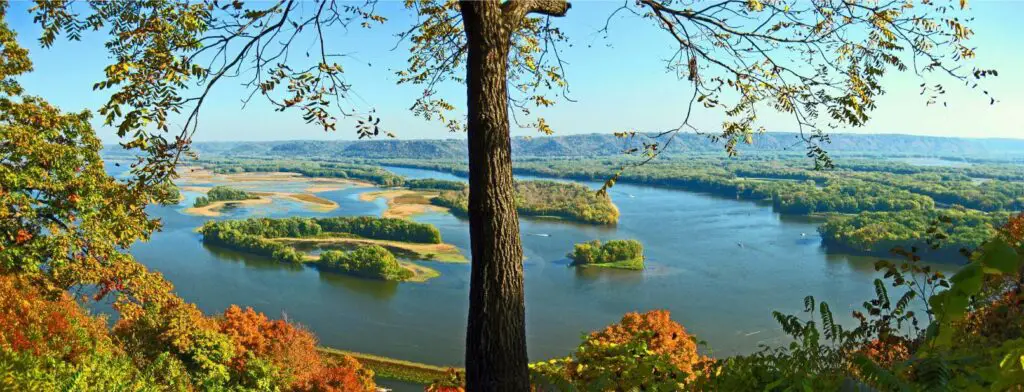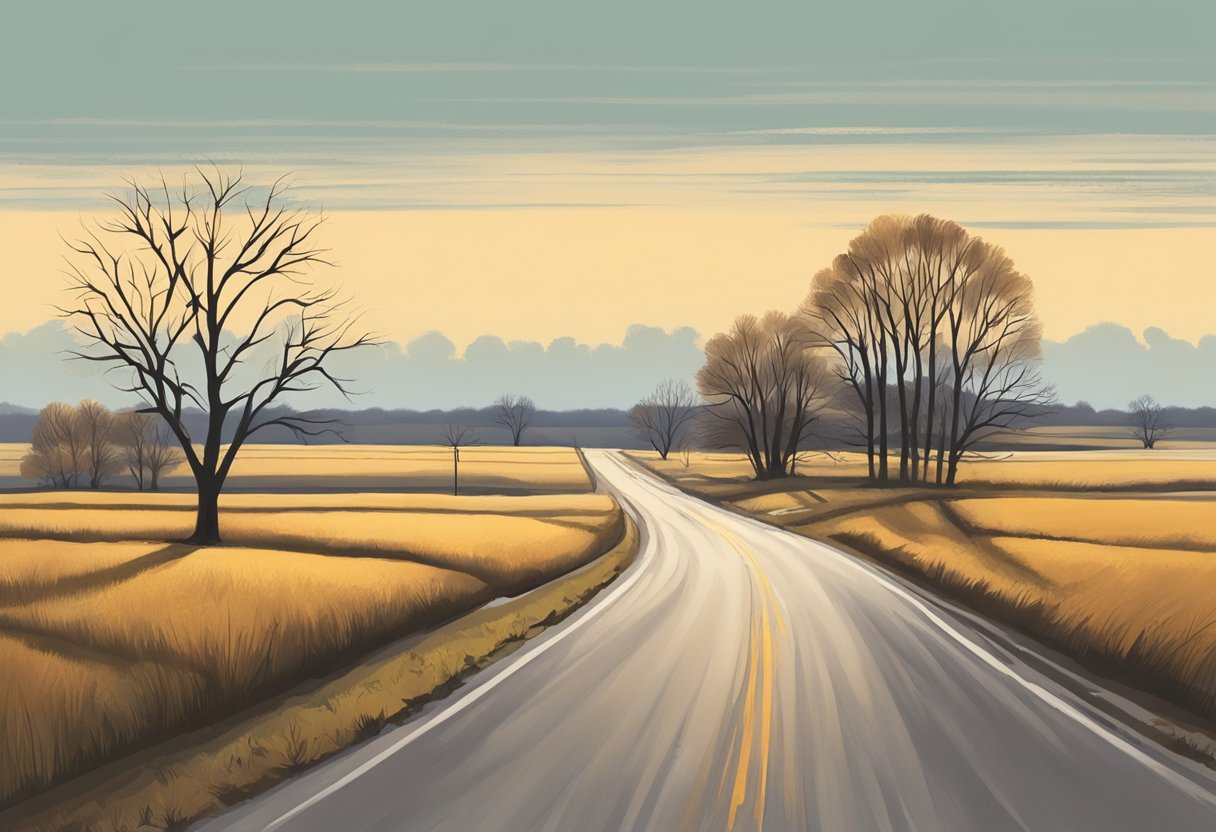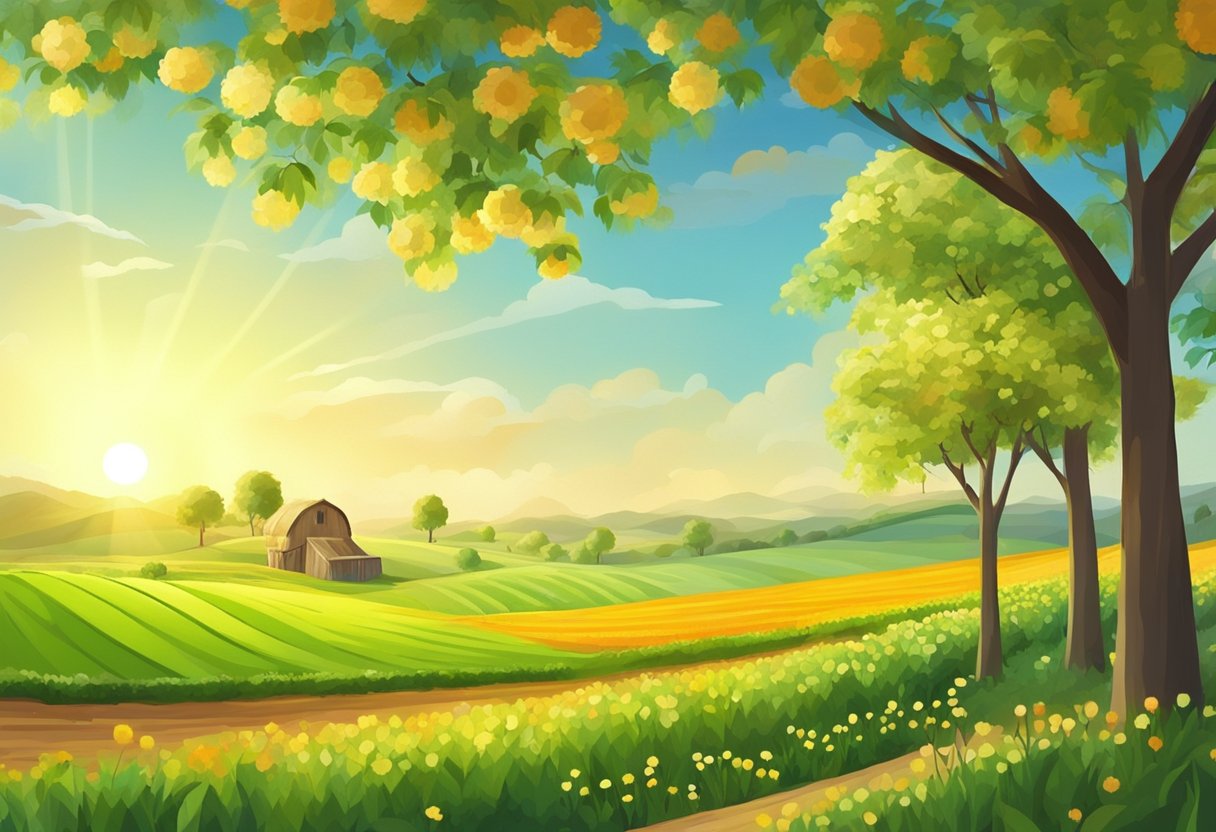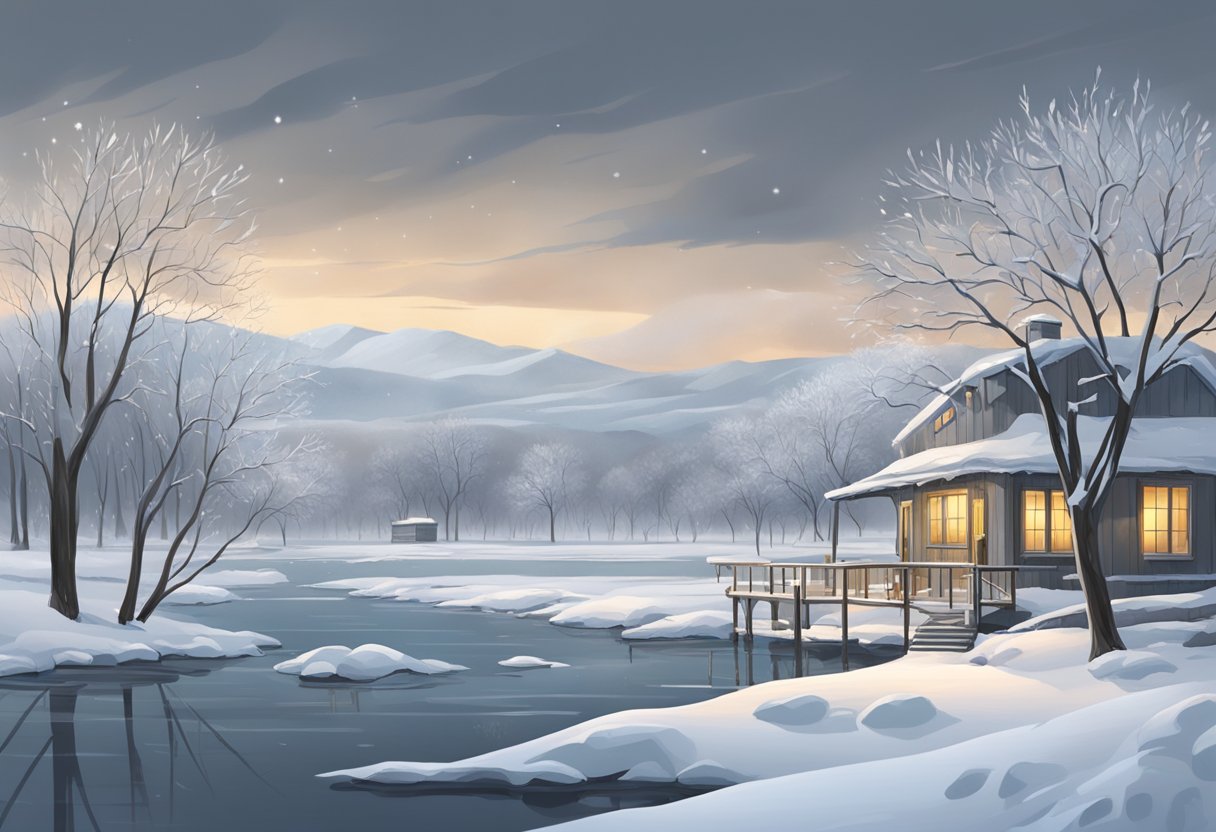
When Is the Best Time to Visit
Visiting Iowa depends on what you’re looking for. The state has four distinct seasons, each offering different experiences.
Spring (April to June): You’ll see Iowa bloom with colorful flowers. It’s quite cool, with temperatures ranging from 50-70°F, making it nice for outdoor activities without the summer heat.
- April: Cooler but pleasant. Ideal for witnessing spring’s arrival.
- May: Warmer. Great for festivals like the Tulip Time Festival in Pella.
- June: Beginning of summer. Perfect for hiking and outdoor events.
Summer (July to August) is warm, with temperatures between 80-90°F. It’s prime time for experiencing Iowa’s county fairs and outdoor attractions.
- July: Expect hot and humid conditions. Pack sunscreen for the day and enjoy local fairs.
- August: Similar to July but with a chance of cooling down towards the end. Perfect for late summer strolls.
Fall (September to November) sees temperatures drop to a cozy 45-65°F, showcasing Iowa’s beautiful fall foliage. It’s also harvest time, so you’ll get the freshest produce.
- September: Mild, with the landscape starting to change colors.
- October: Crisp air and gorgeous leaves. Ideal for scenic drives.
- November: Getting chilly but still pleasant for those who like cooler weather.
Winter (December to March): If you enjoy snow, this is your time. Temperatures often dip below freezing, so bundle up. Winter sports and the famous Bald Eagle Watch are big draws.
- December to February: Cold and snowy. Good for indoor activities and holiday events.
- March: Transition back to spring. Still cold, but with less snow.
For the best overall experience, late spring to early fall is typically recommended. Weather is more reliable, and there’s a wide range of events to enjoy.
When Is the Worst Time to Visit

If you’re not a fan of extreme cold and snowy conditions, avoid visiting Iowa in the heart of winter, which is late December to late February.
Cold Weather: You’ll face freezing temperatures, often dropping below 0°F, especially in January.
- Snow and Ice: Winter storms can lead to icy roads and snow-covered landscapes, making it tough to get around.
- Limited Activities: Some attractions may close or have reduced hours during these months.
Spring Wetness: March and April can be problematic with a mix of lingering winter chill and wet conditions as snow melts.
- Muddy Conditions: Outdoor activities might be less enjoyable due to mud and leftover winter slush.
- Unpredictable Weather: Rapid weather changes during spring can disrupt travel plans.
Heat and Humidity: If you’re sensitive to heat, July and August might be tough, with high humidity and temperatures often above 90°F.
- Storms: Summer can bring severe thunderstorms, which while impressive, can be a spoiler for outdoor plans.
- Crowds: Popular tourist spots can be crowded, especially in July around the time of the Iowa State Fair.
Consider these factors when planning your visit to ensure a comfortable and enjoyable trip to Iowa.
The Cheapest Time to Visit
When you’re looking to save a buck on your travels to Iowa, timing is key. Late fall to early spring is your best bet. Specifically, November through March, when the chill keeps most tourists away, that’s when you’ll find the best deals on hotels and flights.
Here’s a quick breakdown of what you might expect:
- Travel Costs: You can snag travel tickets for much lower prices during this time due to reduced demand.
- Accommodations: Hotel rates drop as the temperature does.
To keep it super simple, check out this table:
| Month | Flight Prices | Hotel Prices |
|---|---|---|
| November | $$ | $$ |
| December | $$$ | $$$ |
| January | $ | $ |
| February | $ | $ |
| March | $$ | $$ |
A dollar sign ($) means cheaper than average, while three dollar signs ($$$) mean it starts getting pricier.
- Crowds: Fewer tourists mean you’ll have more of Iowa’s attractions to yourself.
- Weather: It’s cold and sometimes snowy, so pack warm clothes if you’re not used to the Midwest chill.
And remember, while it’s cheaper, you might stumble upon some local winter festivals that are super fun and budget-friendly. Just keep an eye on the weather forecast, and you’re good to go!
Off-Season: Least Busy Time to Visit

If you’re eyeing a peaceful trip to Iowa, consider dropping by during the off-season. November to March marks the least busy period. It gets colder, and tourist spots are less crowded, meaning you have more space to yourself!
Why Visit in the Off-Season?
- Rates: Hotel and rental prices drop.
- Events: Discover local indoor events.
Weather Considerations
- Expect chilly temps and possible snow.
- Prepare with warm clothes and proper gear.
Travel Tips
- Check road conditions before travel.
- Enjoy quiet museums and cozy cafes.
Here’s a quick glance at what to expect month by month in terms of crowd levels and key activities:
| Month | Crowd Level | Key Activities |
|---|---|---|
| November | Low | Indoor events, early holiday shopping |
| December | Moderate | Holidays, light displays |
| January | Low | Ice fishing, quiet getaways |
| February | Low | Local winter festivals |
| March | Moderate | Early spring events |
Keep in mind, while sights might be less populated, some outdoor attractions might be closed or have limited access. Always check ahead to ensure your desired spots are open for visits!
The Most Expensive Time to Visit
When you’re thinking about visiting Iowa, your wallet might feel the pinch the most during the summer months, especially from June to August. This is peak tourist season, thanks to warm weather and a ton of festivals and events.
-
Accommodation Costs: Expect hotel prices to hike up because lots of folks are looking to stay somewhere nice. It’s supply and demand in action.
-
Event Pricing: Those cool fairs and festivals? They can come with higher entry fees now, so budget a bit extra for fun.
Here’s a quick breakdown to give you an idea:
| Month | Hotel Rates | Event Costs | Overall Expenses |
|---|---|---|---|
| June | High | Moderate | Higher |
| July | Very High | High | Highest |
| August | High | Moderate | Higher |
Travel Tip: Booking early can sometimes snag you a deal, even in these pricier months.
Airfare often peaks around these times too. Everybody’s flying in for the good times, so airlines know they can charge more.
And don’t forget car rentals and dining out. Everyone’s out and about, which means restaurants and rental agencies are in high demand.
Remember: If you go during these months, plan your budget with these things in mind. It’s the best way to avoid any surprises.
Hottest Months

In Iowa, July often reigns as the hottest month of the year. Temperatures can frequently climb into the 90s (Fahrenheit), and humidity can make it feel even warmer. August usually follows closely behind with similar conditions. June starts the trend with rising temps, but it’s generally a few degrees cooler than July and August.
Here’s a quick breakdown of average high temperatures:
| Month | Average High (°F) |
|---|---|
| June | 82 |
| July | 86 |
| August | 84 |
Remember, these are averages, and actual temperatures can be higher. If you’re looking to visit during these warmer months, make sure you’re ready for the heat. Drink plenty of water, wear light clothing, and never forget the sunscreen. Air conditioning is your best friend during this time.
If you’re not a fan of high heat and humidity, you might want to schedule your trip for spring or fall. But if you’re okay with a little sweat, summer in Iowa has plenty to offer, including vibrant festivals and outdoor activities galore. Just be prepared to stay cool!
Coldest Months

When you’re planning a visit to Iowa, it’s important to consider that the winters can be pretty harsh. The coldest months are typically January and February. Temperatures can drop well below freezing, so if you’re not a fan of the cold, these months might be tough for you. Here’s a quick rundown:
- January: You’ll see the mercury often dipping below 20°F. Sometimes, it can even drop to 0°F or lower, especially at night.
- February: Slightly warmer than January, but don’t be fooled. You’ll still need your heaviest winter gear as temperatures hover around 20°F to 30°F.
Keep in mind that snowfall during these months can be heavy, which adds to the chilly experience. On average, Iowa gets about 30 to 40 inches of snow throughout the winter, with January and February being the peak months for snow. This can lead to slick roads and travel disruptions, so it’s wise to check the weather and be prepared for delays.
Average Low Temp Table for January and February (in Fahrenheit):
| Month | Average Low | Snowfall |
|---|---|---|
| January | 10°F – 20°F | 8″ – 12″ |
| February | 15°F – 25°F | 6″ – 10″ |
While the cold can be intense, if you’re up for the challenge, Iowa’s winter landscape is beautiful with frosted trees and blankets of snow on the fields. Just make sure to bundle up and keep warm with plenty of layers, hats, gloves, and a sturdy pair of boots.
Month-By-Month Weather

January: Cold and snowy. You’ll see temperatures often below freezing, with snowfalls making it a good time for indoor activities.
February: Still cold, with chances of snow. Dress warmly if you plan on visiting.
March: You’ll experience a mix of late winter chill and early hints of spring. Unpredictable weather, so pack layers.
April: Spring is here, but it can be wet and cool. You might encounter rain showers.
May: Things warm up and the landscape turns green. Mild and pleasant, with a mix of rain and sun.
June: Enjoyably warm. The beginning of summer brings longer days and outdoor events.
July: Hot and humid. It’s the peak of summer, so stay hydrated and don’t forget sunscreen.
August: Similar to July, hot with potential for thunderstorms. Best time for summer activities.
September: Begins to cool down. Enjoyable fall temperatures and less humidity.
October: Crisp and cool with fall foliage. Perfect for scenic drives.
November: Cool to cold, transitioning into winter. You might see early snow.
December: Cold with snow likely. Bundle up for holiday season visits.
Remember, weather can be unpredictable, and these are just guidelines based on typical patterns. Always check the forecast before your trip.
Frequently Asked Questions
In this quick rundown, you’ll discover the best and worst times for weather, activities, and tips to make the most out of your Iowa visit.
When’s the sweet spot for good weather in Iowa?
Your best bet for pleasant weather in Iowa is from May through October. You’ll find warm, sunny days perfect for exploring the outdoors.
What’s the deal with winter travel in Iowa – yay or nay?
Traveling to Iowa in winter can be tricky with cold temps and snow. If you don’t mind bundling up and enjoy winter sports, give it a go, otherwise, you might stick to warmer months.
What activities can you get up to when visiting Iowa any time of year?
You can enjoy indoor museums, vibrant arts scenes, and some tasty comfort food spots all year round in Iowa, no matter what the weather’s doing outside.
Got any insider tips on the months to avoid due to rain in Iowa?
Avoid planning your trip in June if you’re not a fan of rain. This month tends to be the wettest, potentially putting a damper on outdoor plans.
Which month should I bundle up the most for if I’m headed to Iowa?
January is your coldest month in Iowa. You’ll want to pack your warmest gear if you’re planning a visit then.
Does Iowa go through a seriously breezy period, and when’s that?
You’ll find Iowa quite windy, especially from November until April. Hold onto your hat, and plan for indoor activities if you’re not up for the blustery days!
